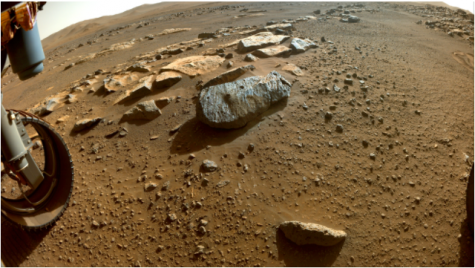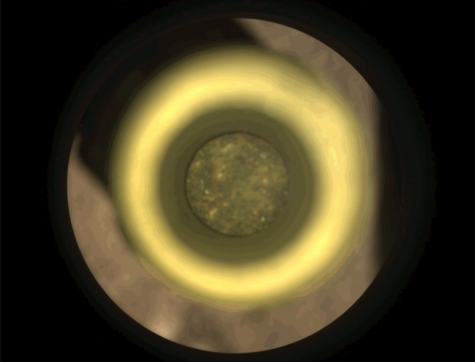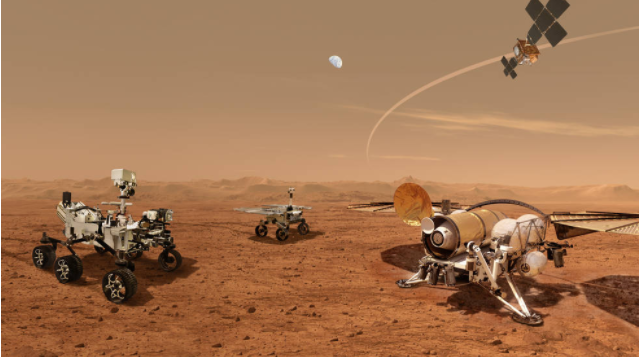Aspirations and Astrobiology: The Possibility of Life on Mars
A concept drawing of future NASA robots collaborating to collect and transport Mars samples. Credits: NASA/ESA/JPL-Caltech
December 8, 2021
With NASA’s Perseverance rover, the world is getting a little closer to finding out if there is a possibility that we are not alone in the universe.
The rover, which landed on Mars in February of 2021, has already taken steps in this new path of discovery.
The Mars Sample Return missions will be an ongoing series of missions to return all collected rock samples progressively back to Earth, which may reveal more about life on planets beyond Mars as well. Rock samples have already been collected and saved for further inspection and research back on Earth.
The first core was collected on September 1st, 2021, making history as the first sample from a foreign planet that will be returned to Earth. The chance of outside life seems to be higher than ever, even with the minimal research scientists can conduct from Earth.

In an interview with NASA.gov, Project Scientist Ken Farley said, “‘It looks like our first rocks reveal a potentially habitable sustained environment…It’s a big deal that the water was there a long time.’”
The discovery that water–a substance required to sustain life of all known lifeforms today–was present on the planet for a long period of time could mean that ancient life was able to develop in a time past on Mars. Mars is the closest resembling currently known planet to Earth and therefore holds the highest possibility to produce life.
In an article for NASA.gov, principal scientist Meenakshi Wadhwa said of the future of these samples: “The collection of these well-documented samples will eventually allow us to analyze them in the best laboratories here on Earth once they are returned.”
Analysis on Mars is difficult due to the issues with sending specialized lab equipment outside of the Earth’s atmosphere. Sudden, drastic changes to air pressure and temperature changes could cause irreparable damage.
These new variables may not only have effects on equipment from Earth, however. The samples themselves will face heavily altering conditions in gravity and air pressure. To prevent damage, samples may be delivered to Earth through a variety of methods. One of the most tested methods is a process called brazing, in which metal alloy is melted to glue metal together and could sterilize the cores.

The temperature changes are perhaps the largest obstacle, as stated by Brendan Feehan, the Goddard systems engineer for the sample return system, “Among our biggest technical challenges right now is that inches away from metal that’s melting at about 1,000 degrees Fahrenheit–we have to keep these extraordinary Mars samples below the hottest temperature they might have experienced on Mars, which is about 86 degrees Fahrenheit.” The brazing process has shown success so far, and will likely be the selected process for the return missions.
This process shows potential for studies of life beyond the red planet, as well. Finding a way to return samples from Mars may reveal a pathway to getting samples from moons and planets far beyond it.
Astrobiologist Daniel Glavin discussed the prospect of getting samples from such places, stating that the selected technique would be essential to more return missions in the future, such as trips to Europa or Enceladus. These missions could result in even more vibrant and living samples, as stated by the scientist: “…we could collect and return fresh ocean plume samples that could contain living extraterrestrial organisms. So we need to figure this out.”
The chosen technique–which is still undetermined–will need to be carefully polished and well known before it can return possibly living samples back towards Earth. The path ahead is lengthy and unknown.
But, with just a little perseverance–and Perseverance–humankind will find a way.












